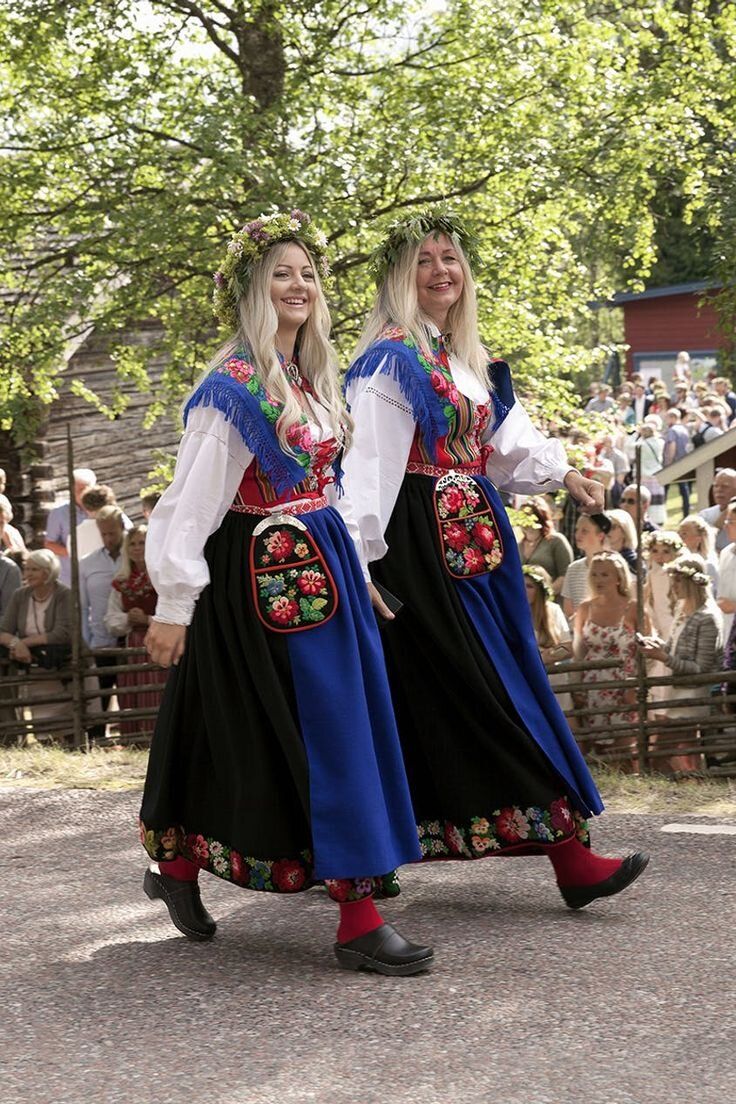Swedish traditional attire, often referred to as "dräkt," is characterized by its vibrant colors, intricate embroidery, and regional variations.

Women's Attire:
- Skirt (kjol): A long, full skirt, often made of wool or linen, with colorful patterns and embroidery.
- Apron (förkläde): A decorative apron, often embroidered with floral or geometric motifs.
- Blouse (blus): A loose-fitting blouse, often made of linen or cotton, with intricate embroidery on the collar, cuffs, and yoke.
- Headwear: A variety of headwear, including bonnets, scarves, and crowns, often decorated with ribbons and flowers.
Men's Attire:
- Shirt (skjorta): A loose-fitting shirt, often made of linen or cotton, with embroidery on the collar and cuffs.
- Vest (väst): A sleeveless vest, often made of wool or velvet, with intricate embroidery.
- Trousers (byxor): Loose-fitting trousers, often made of wool or linen.
- Hat: A variety of hats, including caps, berets, and flat caps.
Regional Variations:
Swedish traditional attire varies across different regions, with each region having its own unique style and colors. For example, the Dalarna region is known for its bright red and green colors, while the Skåne region is characterized by its more subdued colors and intricate embroidery.
Modern Interpretations:
Today, traditional Swedish attire is often worn during special occasions, festivals, and cultural events. Modern designers often incorporate traditional elements into contemporary fashion, creating a unique blend of old and new.